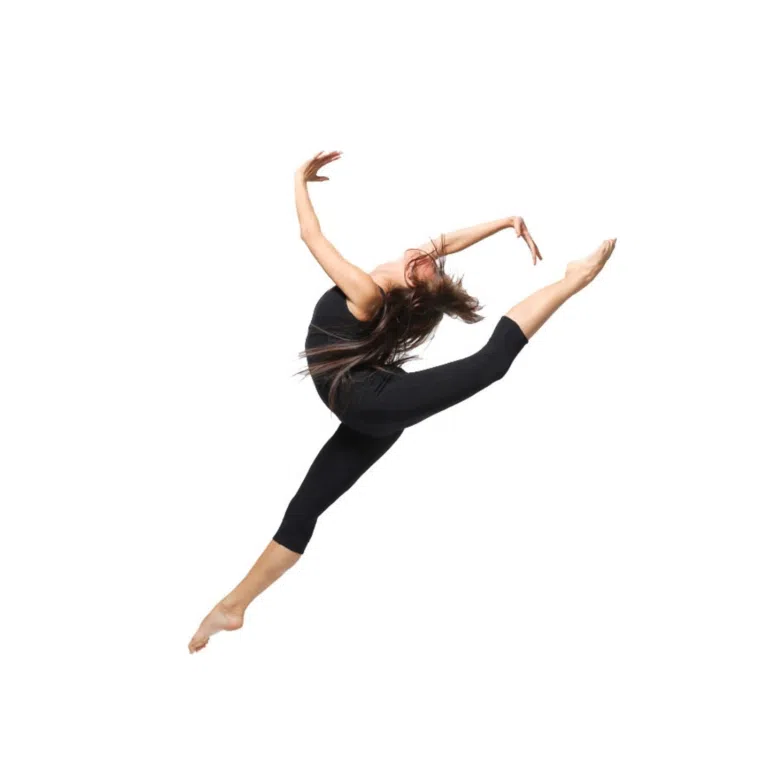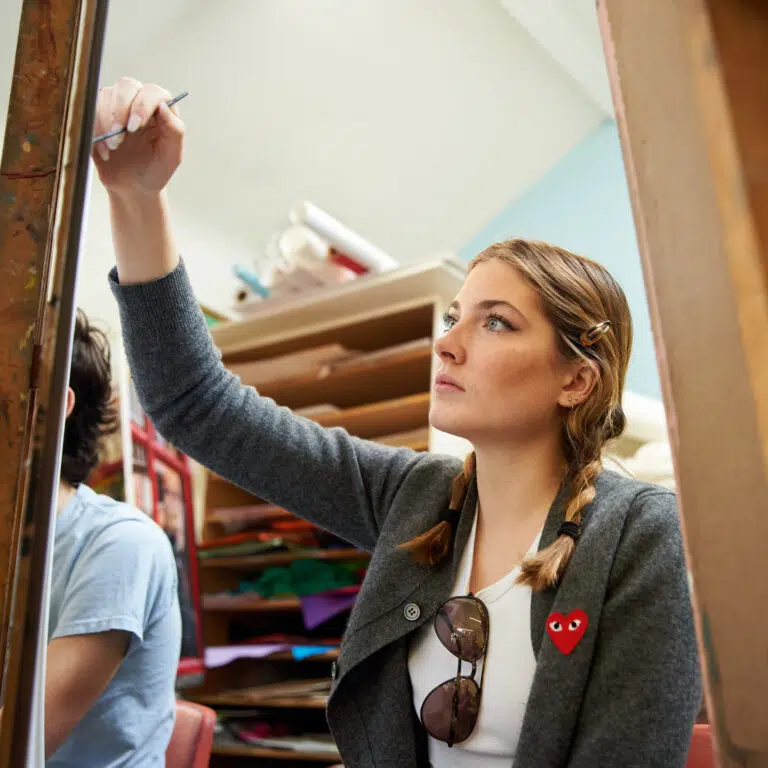Dance A Level
A-level Dance is an exciting dynamic qualification perfect for students looking to study dance both practically and theoretically. The course will prepare students who wish to pursue dance in further education and or as a career. The course encourages students to develop their creative and intellectual capacity, alongside transferable skills such as team working, communication and problem solving. All of these are sought after skills by higher education and employers and will help them stand out in the workplace. This specification reflects both historical and current dance practices, making it more relevant, and inspires a lifelong passion and appreciation for dance.
Watch a video of our A Level Dance here.
Students can expect to study:
- Contemporary Dance
- Ballet
- Jazz
- Repertoire from professional works
- Choreographic Skills including choreographic devices and structuring processes
- Dance History
- Influential practitioners and choreographers
- Critical appreciation and analysis of choreographers and professional works
The A-level Dance specification requires students to develop, demonstrate and articulate practical and theoretical knowledge, understanding and experience of:
- technical and performance skills
- the process and art of choreography
- the interrelationship between the creation, presentation and viewing/appreciation of dance works
- the development of dance placed within an artistic and cultural context
- professional dance works and the significance of these works
- subject specific terminology and its use.
Component 1: Performance and Choreography (50% of A Level)
Solo Performance and Quartet:
Students must develop and apply the knowledge, understanding and skills required to perform dance, as a soloist and in a quartet. The knowledge and understanding of physical skills, including flexibility, strength, cardiovascular endurance, muscular endurance, agility, neuromuscular coordination, and kinaesthetic awareness underpin and inform the development of both the physical/technical and interpretative/performance skills.
Students must develop and apply the knowledge, understanding and skills required to perform as a soloist in the style of a specified practitioner.
The practitioner must be selected from:
- the choreographer of one of the prescribed set works located within an area of study
or
- a named practitioner within one of the prescribed areas of study
Students must learn how to perform as part of a quartet.
The dance can be performed in any dance style relevant to the defined genres
Choreography:
Students must learn how to create an original piece of group choreography, which lasts for a minimum of three minutes to a maximum of four minutes, for three , four or five dancers, in response to an externally set task.
To translate their dance ideas into choreography, students must develop and apply practical knowledge and understanding of choreographic processes, including:
- researching , developing and experimenting with dance ideas through studio and non-studio investigation
- the rehearsal process.
Component 2: Critical Engagement (Theory) (50% of A Level):
The areas of study cover the genres of modern dance, ballet and jazz dance, offering a breadth of study.
Compulsory Set work: Rooster (Christopher Bruce , 1991)
Students must know and understand the following about Rooster :
- the significance of the character of the dance
- the subject matter (eg theme or topic) of the dance and its treatment
- the form of the dance (eg phrases, sections) and its effectiveness in communicating the subject matter
- the Constituent Feature of the dance and their relevance in embodying the subject matter
- the choreographic approach (the particular technique, movement style and choreographic style) of the choreographer
- the influences affecting the development of the choreographer
- the origins of the dance
- the relationship between the dance and its context
- the importance of the dance in the development of both the choreographer and the genre
- the similarities and differences between the dance and other works by the choreographer.
Compulsory area of study: Rambert Dance Company (formerly Ballet Rambert) 1966–2002
Students must know and understand the following about the area of study:
- the stylistic features of Rambert Dance Company and how these relate to the genre
- the choreographic approach (the particular technique, movement style and choreographic style) of a minimum of two named practitioners from the list above showing the range within the genre, including:
- the influences affecting the development of the named practitioner’s technique and style
- at least two works from the two selected named practitioners
- the importance of the practitioners’ works in the development of the genre in relation to Rambert Dance Company
- the position of the genre within history, culture and society
- the genre’s capacity to reflect and challenge society
- terminology specific to the genre
Named practitioners:
- Glen Tetley (born 1926)
- Robert North (born 1945)
- Richard Alston (born 1948)
- Siobhan Davies (born 1950)
- Ashley Page (born 1956)
- Christopher Bruce (born 1945)
- John Chesworth (1930)
- Martha Graham (born 1894)
Students must then study the same content for the optional area of study and set work.
Optional set works and areas of study:
| Option | Set Work | Area of Study |
| 1 | Giselle (Jean Coralli and Jules Perrot, 1841) | The romantic ballet period |
| 2 | Appalachian Spring (Martha Graham, 1944) | The origins of American modern dance 1900-1945 |
| 3 | Singin’ in the Rain (Stanley Donen and Gene Kelly, 1952) | American jazz dance 1940-1975 |
| 4 | Sutra (Sidi Larbi Cherkaoui, 2008) | The independent contemporary dance scene in Britain 2000-current |
Course Breakdown:
| Component 1: Performance and choreography |
What’s assessed
|
How it’s assessed
|
|
Non-examination assessment (NEA) marked by an external assessor from AQA during a visit to your centre. Visits will normally take place between March and May. Externally set tasks are distributed by 15 September in the academic year of certification. |
Further Education:
| Component 2: Critical Engagement |
|
What’s assessed Knowledge, understanding and critical appreciation of two set works
|
How it’s assessed
|
|
Questions Tow sections:
|
A Level Dance will give you access to most degree courses as a recognised A Level qualification, but it is most relevant to giving you access to dance degree courses at University, as well as professional Theatre School’s and Dance Colleges. It is also relevant to many other degree courses within Performing Arts and can contribute to Music and Drama.
Career opportunities within the dance and the performing arts industry can include:
– Dancing professionally in the West End, musical theatre, worldwide touring, music videos and more.
– Costume / Set Design
– Dance Movement Therapy
– Choreography
– Dance Psychotherapy
– Dance Critic
– Teacher of Dance / Performing Arts
– Dance Lecturer
– Dance Director / Producer
GCSE Dance would be beneficial prior to A Level but not essential.
Examination board: AQA



